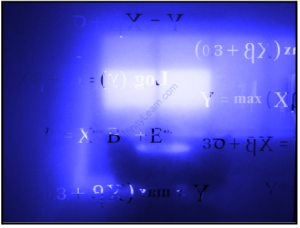Table of Contents

Introduction
The concept of an ellipse is crucial for the JEE exam. The set of all points on a plane whose distances from two points add up to a constant is called an ellipse. We will come across definitions, ellipse equations, and properties in this article, which will aid students in gaining a thorough understanding of the issue. Some of the most important ellipse equations are area and circumference, tangent equation, tangent equation in slope form, chord equation, normal equation, and the equation of chord joining the ellipse’s points.
Geometry’s Tangent Meaning
In geometry, a tangent is a line that only touches a circle or an ellipse once. If a line intersects a curve at P, the point “P” is referred to as the point of tangency. To put it another way, it’s the line that indicates the slope of a curve at that point.
In mathematics, what does “ellipse” mean?
The locus of all places on a plane is an ellipse when the sum of distances between two fixed points in the plane is constant. The fixed points that are encompassed by the curve are called foci (singular focus). The eccentricity of the ellipse is represented by the constant ratio, while the directrix is represented by the fixed line. The letter ‘e’ represents eccentricity, a feature of the ellipse that denotes its lengthening. The major and minor axes define an ellipse’s area, and the shape of the ellipse is oval. The area of an ellipse is equal to ab, where a and b are the lengths of the ellipse’s semi-major and semi-minor axes, respectively. Ellipse is analogous to other parts of the conic section that are open in shape and unbounded, such as parabola and hyperbola.
The Ellipse’s Most Important Characteristics.
The Ellipse’s important qualities are listed below.
1. Centre is the point where the major and minor axes intersect.
2. Focus: The focus is Ellipse’s fixed point.
3. Ellipse: Major Axis: The Ellipse’s largest diameter.
4. Minor Axis: The Ellipse’s smallest diameter.
5. Directrix: Ellipse’s fixed straight line is called the directrix.
6. Eccentricity: Eccentricity is the Ellipse’s constant ratio, indicated by e. e1.
7. Tangent: is a line that only touches the Ellipse at one point.
8. Chord: The chord is the line that connects any two locations on the Ellipse.
9. Latus rectum: The chord that runs through the focus and is perpendicular to the major axis is known as the latus rectum.
10. Lahire’s Theorem: Let P and P’ be stationary lines in the plane, and examine another moving line on which any three points A, A’, and A” are pointed, according to Lahire’s Theorem. A” defines an ellipse if A and A’ are constrained to reside in P and P’, respectively.
What is the ellipse’s radius?
The radius is the distance between an object’s centre and its perimeter. An ellipse, which is a circle that has been extended in one direction, has two radii: the semimajor axis, which is longer, and the semiminor axis, which is shorter. Measure the distance between each of the foci and the point on the perimeter.
What is the ellipse’s focal point?
An ellipse is a conic with an eccentricity less than one in conic sections. Focus and directrix are the terms for a fixed point and a fixed straight line, respectively. An ellipse has two points that are the ellipse’s focus.
Important Concepts
An ellipse is a collection of all points (x, y) in a plane whose total of distances from two fixed points is a constant. Each fixed point is referred to as a focus (plural: foci).
We can express an ellipse’s equation in standard form using the foci and vertices of its coordinates.
In order to graph an ellipse centred at the origin in standard form, we must first determine its vertices, co-vertices, foci, and the lengths and placements of the major and minor axes.
We can determine the important properties of an ellipse centred at a place other than the origin and graph the ellipse when given the equation.
The conventional equations of ellipses can be used to describe real-world scenarios, which can then be assessed to find crucial properties such axe lengths and distance between foci.
The shape of an Ellipse
An ellipse is a two-dimensional shape specified along its axes in geometry. When a cone is intersected by a plane at an angle to its base, an ellipse is created.
It has two main sites of interest. The sum of the two distances to the focal point is always constant for all places on a curve.
A circle is an ellipse in which the foci are all at the same location, which is the circle’s centre.
Also read: Equipotential Surface
FAQs
Q. What is the ellipse’s fixed point?
Ans: Ellipse The locus of all those locations in a plane whose sum of distances from two fixed points in the plane is constant is called an ellipse. The fixed points that are encompassed by the curve are called foci (singular focus). The eccentricity of the ellipse is represented by the constant ratio, while the directrix is represented by the fixed-line.
Q. What is an electrostatic coating, and how does it work?
Ans: The term “electrostatic” is defined as “electrical 1: pertaining to or involving static electricity or electrostatics 2: using or including the use of electrically charged particles in a spray to achieve thorough coating.
Q. What is an ellipse’s directrix?
Ans: The ratio between the distance to the focus and the distance to the directrix is a constant for all places on the ellipse when described in terms of one focus point and a line outside the elliptical called the directrix.








